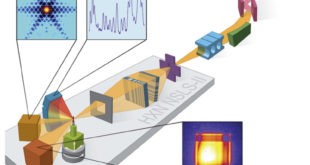Virtually every modern naval weapons system, in fulfilling its mission, is highly dependent upon the performance characteristics of its electrochemical power supply. For example, batteries are used to power detection, guidance, control, ignition, propulsion, arming, fuzing, transmitting and jamming devices. The need for weapons with increased range, speed, endurance, sensitivity …
Read More »Critical Infrastructure Protection Market
Networked technologies touch every corner of the globe and every facet of human life. They have driven innovation, nurtured freedoms, and spurred economic prosperity. Even so, the very technologies that enable these benefits offer new opportunities for malicious and unwanted cyber activities. Cyber-attacks are continuously growing in size and breadth, targeting …
Read More »DARPA HACMS employed Formal Verification Methods to develop hack proof unmanned vehicles , weapons , satellites, and command and control systems
In 2011, Iran claimed to have downed a sophisticated American stealth drone, and unveiled what it alleged was a reverse-engineered copy of the futuristic looking RQ-170 Sentinel UAV, produced by defense giant Lockheed Martin. The drone was brought down by the Iranian Armed Forces’ electronic warfare unit which commandeered the …
Read More »DARPA project for cryogenic cables and connectors for quantum computing
Cryogenic electronics is important for a growing number of applications, including superconducting classical computing, superconducting quantum computing and quantum annealing, and superconducting single-photon detector arrays. One of the more difficult aspects about developing a successful superconducting electronics technology at very low temperatures (~10 mK) is the lack of robust commercial …
Read More »DARPA EPIC-HXR developing Hard X-ray imagers
An X-ray, or, much less commonly, X-radiation, is a penetrating form of high-energy electromagnetic radiation. Most X-rays have a wavelength ranging from 10 picometers to 10 nanometers, corresponding to frequencies in the range 30 petahertz to 30 exahertz (30×1015 Hz to 30×1018 Hz) and energies in the range 124 eV …
Read More »Ion beam accelerator for nuclear device characterization, detection of contraband materials, and Directed energy weapons
Ion beam accelerators are machines providing kinetic energy to charged particles called ions, which bombard the target sample – the material to be irradiated and subsequently analyzed. The target can be a thin foil or a piece of mineral, rubber, textile, tissue, soil or metal. The sample can be an …
Read More »Availability & Reliability of Satellite Constellation, Satellite System and Subsystems
Over the past three years, SpaceX has deployed thousands of satellites into low-Earth orbit as part of its business to beam high-speed internet service from space. But the company’s latest deployment of 49 new satellites after a Feb. 2021 launch did not go as planned. As a consequence of …
Read More »New Radiation-hardened electronics enable military small satellites in Low Earth Orbit (LEO) to deep space missions
There has been rapid growth in New Space applications like small satellites (small sats) and Low Earth Orbit (LEO) mega constellations or satellite swarms. The increased U.S. investment in military space is driving growth in classified and unclassified applications. The Satellite has a large number of electronic systems and …
Read More »Implementing AS9100 Quality Standard for Aviation, Space and Defense products and services
Quality standards are defined as documents that provide requirements, specifications, guidelines, or characteristics that can be used consistently to ensure that materials, products, processes, and services are fit for their purpose. Standards provide organizations with the shared vision, understanding, procedures, and vocabulary needed to meet the expectations of their stakeholders. Because …
Read More »Challenges for electronics for defense and aerospace and technology solutions
The Satellite has a large number of electronic systems and subsystems which are critical to the functioning and its mission. The spacecraft is divided into two sections: the platform or bus and the payload. The platform consists of the five basic subsystems that support the payload: the structural subsystem, the …
Read More » International Defense Security & Technology Your trusted Source for News, Research and Analysis
International Defense Security & Technology Your trusted Source for News, Research and Analysis








